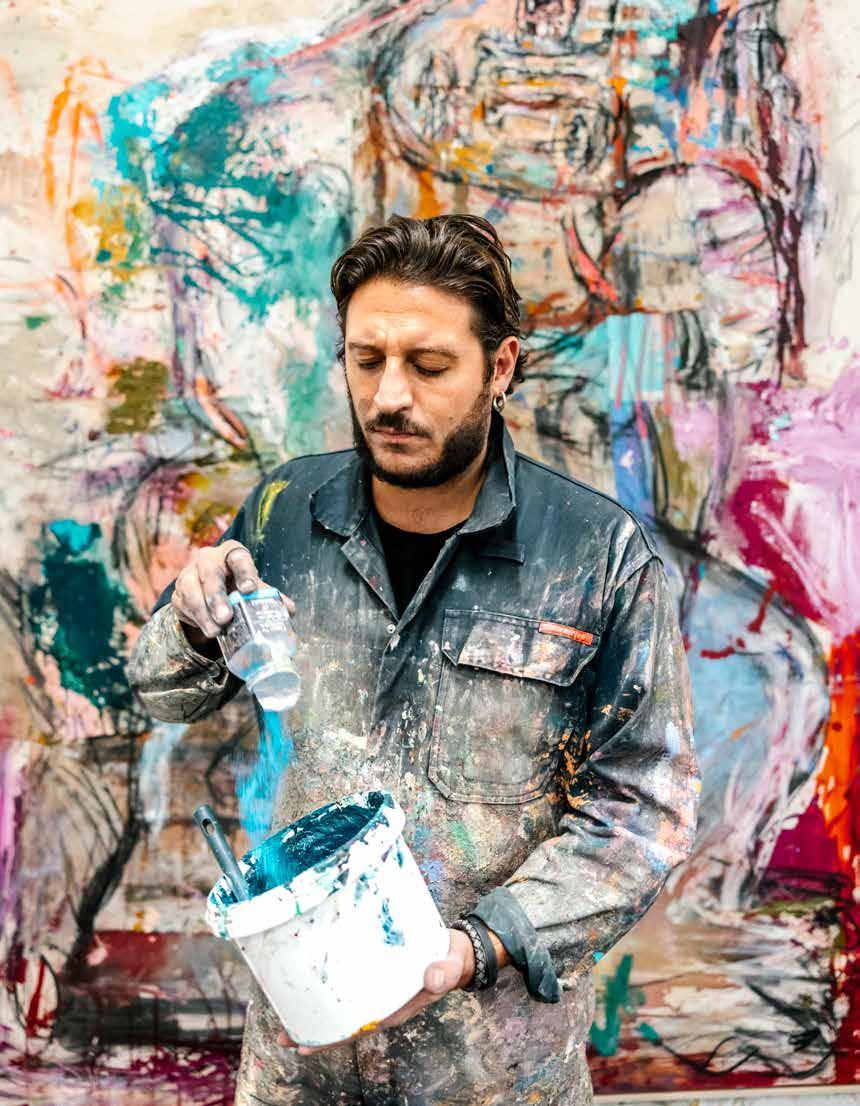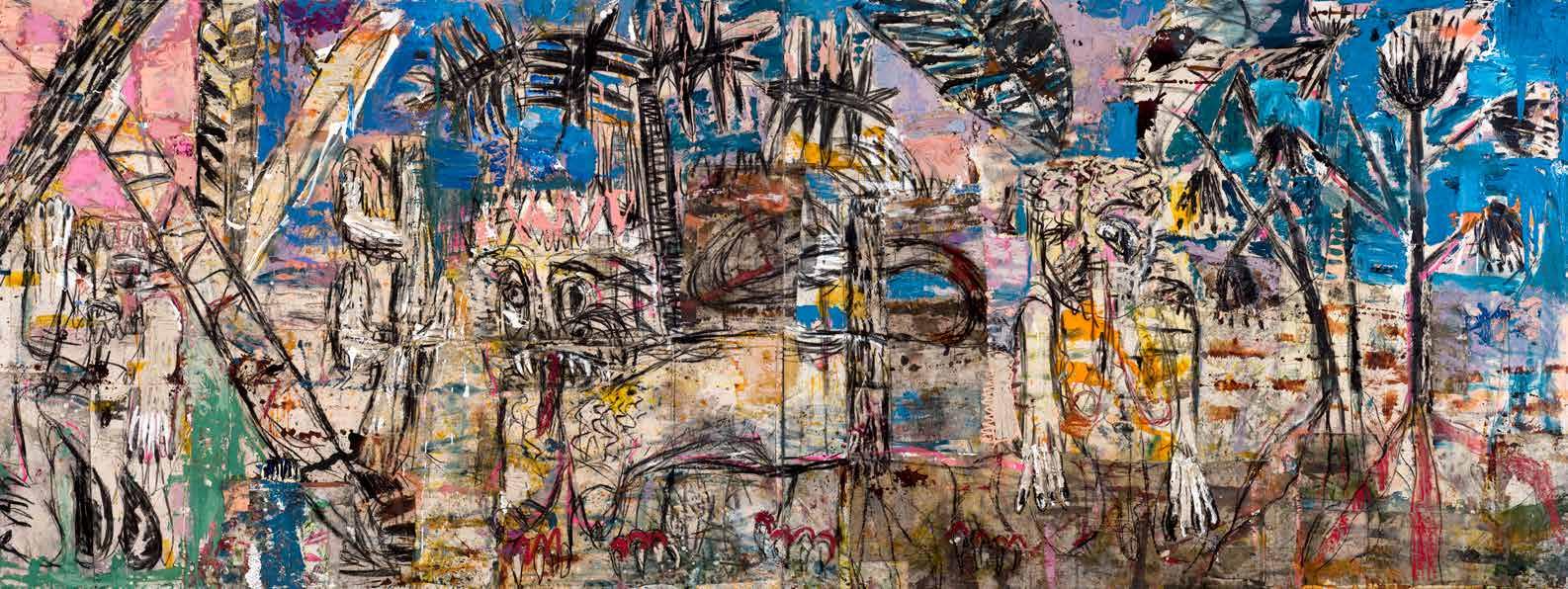
5 minute read
DIRECTOR’S FOREWORD
from Ashmolean Now
Artists have always looked to the art of the past — although the nature of artists’ responses to what has gone before has always been wildly varied. At the same time most museums see part of their role as encouraging, informing or engendering contemporary artists. Indeed, many of the Ashmolean’s collections were specifically assembled as teaching tools — most notably, perhaps, those donated to the Museum by John Ruskin and used by him in his own teaching. More recently, and increasingly, contemporary artists have assumed a different role within historic museums — as interpreters and activators, commentators on historic collections; allies in the museums’ mission of encouraging contemporary audiences to look anew and with different eyes at their historic collections.
When museums and contemporary artists engage most fruitfully, of course, all these things happen at once, and light is shed in all directions. The new Ashmolean NOW exhibition series hopes to generate such creative, multi-faceted conversations between past and present, between artists and audiences and between the works of art themselves. Through this series we invite early- to mid-career UK-based artists into the Museum and ask them to look, think and create work in response. The first exhibition of the Ashmolean NOW series is dedicated to contemporary painting. It juxtaposes the work of two artists, by dividing the exhibition space (and this book) into two: Daniel Crews-Chubb x Flora Yukhnovich.
Daniel Crews-Chubb has garnered recognition for his innovative, experimental and expressive collage paintings, which interrogate motifs and archetypes of art history, while also linking to the legacies of twentieth-century modernist paintings. In his new series, Immortals, which is informed by depictions of deities and other non-human figures throughout history, Crews-Chubb explores the divine privilege of immortality. Inspired by works in the Ashmolean’s collections as well as external sources, Immortals opens a space to consider spirituality and the purpose of artistic practise in our contemporary moment. The Museum’s rich and diverse collections provide a fitting context for Crews-Chubb’s dynamic paintings, creating new dialogues between the past and present, sculpture and painting, East and West.
My thanks are due to Lena Fritsch, the Ashmolean’s Curator of Modern and Contemporary Art, for devising and curating the Ashmolean NOW series, and for all her work on this exhibition and book. We are enormously grateful to Andy and Christine Hall, and Neil Simpkins and Miyoung Lee, who generously support her post. We also offer sincere thanks to Christian Levett and those who wish to remain anonymous, to the Patrons of the Ashmolean Museum, and to Ben Brown for their support of the Ashmolean NOW series. This exhibition and catalogue of Crews-Chubb’s work could not have been realised without the support of Timothy Taylor gallery and we are truly grateful for their close collaboration. We also owe a debt of gratitude to Sydney Smith for her insightful essay, and to everyone at the Ashmolean who has worked tirelessly behind the scenes to make this exhibition possible. Above all, we would like to thank the artist, Daniel Crews-Chubb, for his trust — it has been a great joy and honour to work with him.
Xa Sturgis

Introduction The Contemporary Eternal
Sydney Smith
For a contemporary artist, Daniel Crews-Chubb has an unusually ambivalent attachment to the ‘now.’ While his work is highly experimental, pushing the boundaries of paint as a medium and exploring the complexities of personal identity, his new series of Immortals (pp.32–41) are also rooted in forms of expression that belong to the past. These mixed-media paintings reach back into antiquity to sources as varied as Mayan funerary objects, Roman and Greek sculpture as well as Hindu temple guardians in order to find inspiration from art that acted as a tool for devotion and a link to the divine. The sketchy outlines and enigmatic expressions of the monumental figures in the Immortals series reflect what the artist describes as his ‘strange relationship to history.’1 For Crews-Chubb, history is mysterious and subjective, something that we can only apprehend through glimpses of the visual and material culture that has been left behind. The Immortals series is inspired by traces of the past, but uses a contemporary palette and a mixture of materials from oils to spray paints that catapult the work into the present. The figurative motif mimics certain formal qualities of historical depictions of gods, goddesses and deities – such as their scale and posture – whilst their identities remain elusive to the viewer, hovering on the level of the suggestive.
While Crews-Chubb began his series of Immortals last year at the Ashmolean’s invitation to respond to its collections, this new body of work is also informed by his long-standing desire to explore his own spirituality. The title of the series refers to the divine privilege of immortality, and the figures in these paintings are inspired by depictions of gods and goddesses throughout history – of which innumerable examples can be found in the collections of the Ashmolean. Unlike other painters inspired by mythology, such as the American artist Cy Twombly (1928–2011), who framed his abstract compositions with titles like Leda and the Swan or Apollo, Crews-Chubb’s Immortals open a space to consider how we might reimagine spirituality in our contemporary moment. The figures in the paintings constitute the artist’s own ‘invented mythology’, as he puts it, taking inspiration from classical sculpture and ancient artefacts to offer artwork that he hopes could one day be offered as gifts to gods we haven’t yet named.
In these paintings, ink, sand, charcoal, pastel and impasto oils create dense forms of crouched figures that stoop into the frame, with their feet and the crowns of their heads pushing right up against or out of the top and bottom margins. The scale of the standing figures is precisely 1.5 times the size of Crews-Chubb’s own body, a formulation that establishes the Immortals as larger-than-life, but not out of reach. They function as demi-gods, suggesting something of the human as well as the divine.

Finding a Painterly Language
Daniel Crews-Chubb was born in 1984 in the East Midlands industrial town of Northampton. At school, he struggled with dyslexia. His favourite subjects became physical education and art, which functioned as outlets for his energy
Daniel Crews-Chubb, Forest (blue, green, pink), 2018. Oil, acrylic, charcoal, ink, spray paint, pastel, coarse pumice gel and collaged fabrics on canvas, 200 x 500 cm and creativity. With ambitions to become a painter, he moved to London to attend the Chelsea College of Arts, where he discovered that painting as a medium was ‘out of vogue’. The young artist clashed with professors and students who pushed him to work more conceptually in new media like installation and video. After graduating in 2009, Crews-Chubb enrolled in the newly-established Turps Art School, which offered a Painters Studio Programme that finally emboldened him to delve into the possibilities offered by his chosen medium among an experimental group of peers.
With this new-found sense of freedom, Crews-Chubb developed the intensely physical mixed-media painting style that has become his hallmark. In his work, paint is smeared with the fingers, scratched with a stick, glopped on straight from the tube, sprayed from a can, and mixed into sand or pumice gel. The combination of this ‘wild’ use of materials with historical subject matter is a recurring characteristic of his work, perhaps informed by his formative experiences in art school, where he felt his practice was more in conversation with voices from art’s past than the contemporary Zeitgeist. In paintings like his 2018 series of Beasts and Forests, panoramic landscapes are populated by fantastical creatures and their mysterious human counterparts. Using imagery




